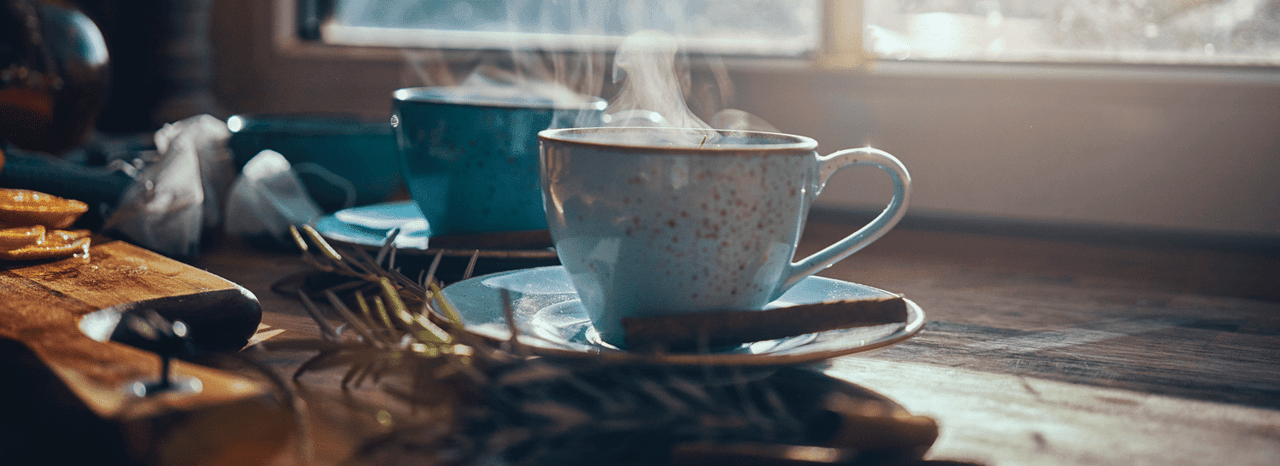Spilling the Tea | Enjoying the World's Top Beverage
Your Home & Lifestyle Magazine
From its origins in imperial China to Victorian tea rooms and modern kitchens, humans have sipped on tea for centuries. Whether you consume the beverage for its medicinal properties, energy boost, or the simple pleasure of a daily ritual, the art and enjoyment of tea is steeped in tradition.
Sourcing.
To be considered genuine, tea leaves must come from the Camellia sinensis plant. (This means that popular herbal blends, while similar, aren’t truly teas at all.) Native to Southeast Asia, Camellia sinensis is grown across the globe. Its growing conditions and harvest methods affect the flavor, color, and aroma of the steeped leaves, producing a wide variety of characteristics and types. These are generally grouped into five or six categories: white, green, oolong, black, pu-erh, and sometimes yellow. The classification is largely based on oxidation levels—essentially, how long the leaves are exposed to air after picking and before “fixing,” or heating.
White tea is harvested early and dried, producing a delicate, often sweet final product. Green tea leaves are also picked early but pan-fired or steamed (like matcha). Yellow tea, mostly found in China, undergoes a similar process with added complexity. Oolong tea is characterized by partial oxidation and bruising or rolling before processing, while black teas require full withering and oxidation. Pu-erh takes the process one step further to fermentation.
Steeping.
Tea produced for general home consumption is usually packaged one of two ways: bagged or loose-leaf. Tea experts suggest using whole, loose leaves for the best drinking experience—the softening leaves move better with the water, extracting maximum flavor and aroma.
Keep your water shy of boiling to maintain the leaves’ best properties and cover the cup or pot while your tea is steeping. It’s important to follow the recommended steeping time for each tea. Some greens require as little as two minutes, while black and oolong varieties can take up to five. And when your first cup is ready, don’t toss out the leaves! Many teas can be steeped multiple times.
Saving.
After enjoying your tea, store the leaves or bags in an airtight container in a dark, cool place. Avoid plastic containers to prevent old flavors from leeching into new ones and stick to fully opaque materials when you can. The exception to these rules? Pu-erh is traditionally stored in a breathable, wooden container to allow for continued fermentation.
-
staples for sipping.
Keep these teas on hand for the perfect cuppa, no matter the occasion.
Black tea. Opt for a classic Earl Grey or English Breakfast for a caffeinated pick-me-up likely to please most houseguests. Feeling fancy? Fortnum & Mason’s Royal Blend is decadence in a teacup.
Green tea. Green teas offer a mellower flavor profile—and potential health benefits. Whether you choose a sweeter Japanese green tea or a nuttier Chinese green tea, be wary of oversteeping, which yields bitterness.
White tea. Looking for something that feels adventurous but approachable? Try a white peony blend like Smith Teamaker’s White Petal for a delightfully floral aroma and creamy taste.
Rooibos tea. Find a blend with chai or cinnamon for a bolder flavor profile, like Harney & Sons’ Thai Rooibos.
Herbal blend. They may not be “true” teas, but non-caffeinated herbal blends like chamomile and peppermint are the perfect balm for jet lag, lingering colds, or blustery nights.
-
YHL/ Written by Victoria Hittner
Photography by GMVozd/E+/Getty Images.
